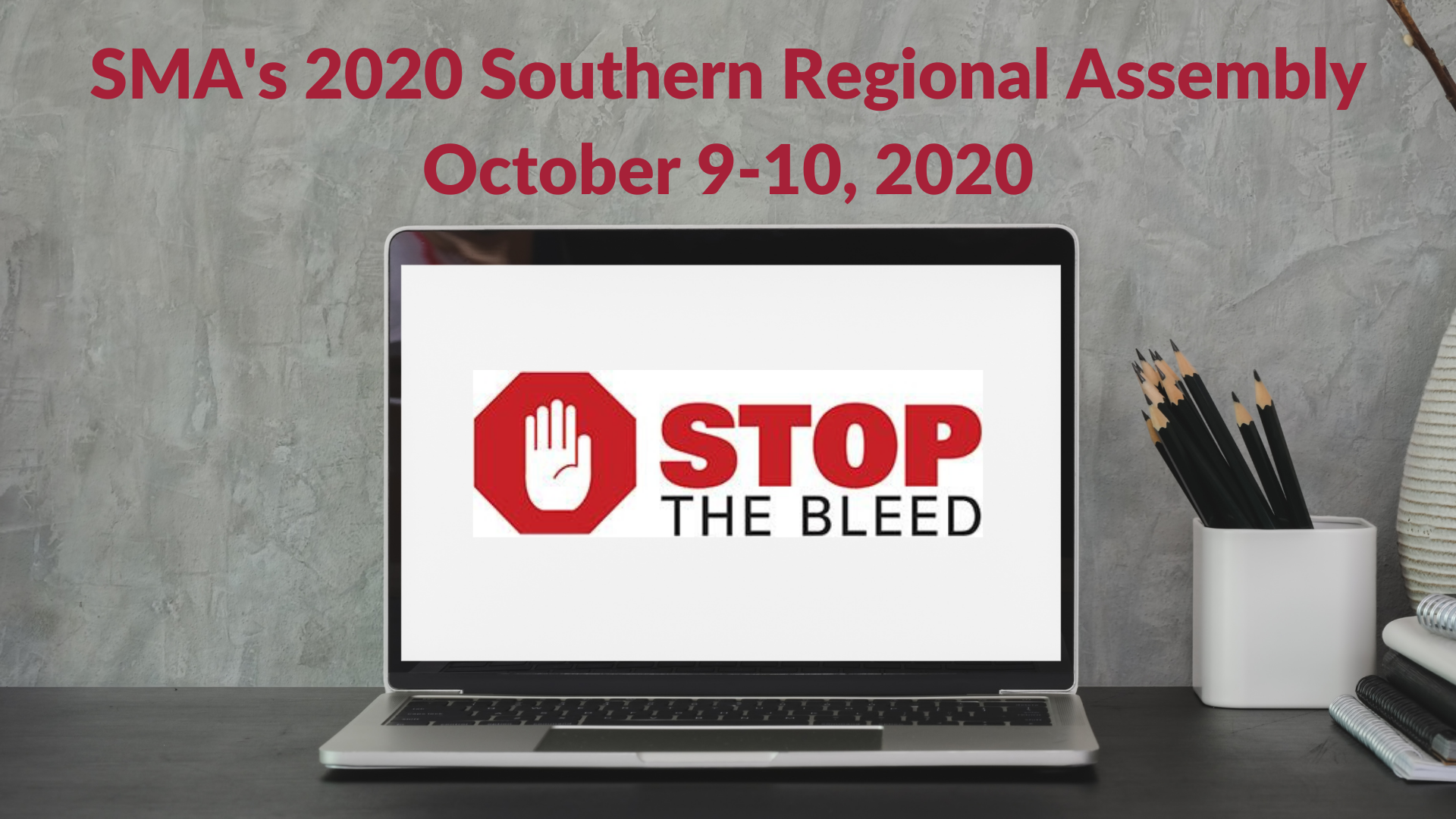
Stop the Bleed

Join us at the 2020 Southern Regional Assembly as Leonardo Geraci, DO, presents Stop the Bleed.
Far too many deaths occur as a result of the inability to quickly stop hemorrhaging and the time it takes to transport an injured person to a medical facility. However, this can be prevented with on-site Bleeding Control Kits that are worn as belts on each law enforcement officer and located in K-12 schools.
Since 2008 the number of active shooting events (ASEs) tripled from five on average per year to almost 16 on average per year with almost one-half occurring at businesses and one-third occurring in schools, according to the Federal Bureau of Investigation. Over the past fifteen years we have witnessed these horrific ASEs at Columbine High School, Virginia Tech, Fort Hood Army Base, the Aurora Movie Theater, the Boston Marathon, and the Columbia Mall, among others.
While the locations range from schools to malls, one thing is in common – those on-site when the shooting occurs and law enforcement who are the first to arrive are in the best position to stop hemorrhaging that can save lives and limbs. The average response time by law enforcement for a mass casualty incident (MCI) is three minutes whereas medical professionals can take much longer or can’t be reached at all unless a police car delivers the patients to a medical facility. In fact, 80% of mass casualty patients are delivered to medical facilities by non-ambulances, according to the Special Operations Medical Association 2013 Conference. If no care is provided to stop bleeding on-site, the likelihood for surviving drops significantly.
According to the National Trauma Institute, hemorrhaging is responsible for almost 35% of pre-hospital deaths and 40% of deaths in the first twenty-four hours after a traumatic event and the U.S. Army considers hemorrhage as the number one preventable cause of death on the battlefield. As a result, the Department of Defense introduced gauze containing hemostatic agents in warzones in 2003 and by 2008 all warfighters were armed with their own trauma kit containing Combat Gauze upon deployment. The rapid response required on the battlefield mirrors the response needed in ASEs.
Objectives
- Identify Bleeding;
- Identify the techniques available to stop bleeding, including compression, packing, and application of a tourniquet;
- State the steps to take when confronted by a bleeding victim.
Suggested Reading for Learners
Register for the 2020 Southern Regional Assembly Learn More about the Assembly
